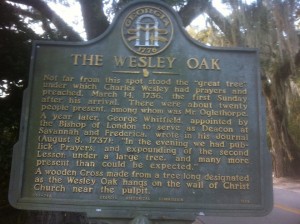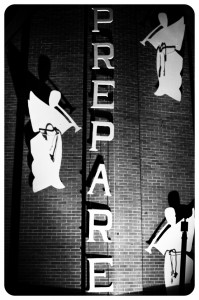What is Advent? It’s the season of preparation for Christ’s coming (more specifically on how to observe Advent here), and is a time of repentance and longing, as well as hope and joy. Advent begins on the fourth Sunday before Christmas in the Christian Church Year calendar. We look back to Messiah’s first coming, as a baby in a manger, and look forward to His return on clouds of glory to reign as King.
Looking for Advent song ideas? Charles Wesley wrote one of the best songs for Advent, “Come Thou Long Expected Jesus.” It is superior to Wesley’s better known Christmas carol “Hark! The Herald Angels Sing” (which hymnal committees have improved upon somewhat, in the versions most Christian denominations sing today).
Listen to this version of Wesley’s “Come Thou Long Expected Jesus” by Bill Mallonee (himself one of America’s “Top 50 Living Songwriters” according to Paste Magazine) and then we’ll examine the lyrics to this Advent hymn:
In Charles Wesley’s best hymns his language is clear and vivid, relying on concrete nouns, active verbs and simple metaphors — often taken from scripture. That is the case in this song, which uses one of Wesley’s most successful meters, 87.87 meter, a variation of common and long meter (for an intro discussion of hymn meter, see the My Song In The Night Modern Hymns page).
If you want to write modern hymns or to compose modern music for old hymns, pay extra attention here:
As you’d expect from the title, Come Thou Long Expected Jesus is a song that implores Christ to come. The tone of the lyrics is emphatic, maybe even urgent.
- Take that into account if you write contemporary music for Come Thou Long Expected Jesus
- Pay attention to how Wesley achieves this effect, if you want to write lyrics that implore, urge, plea or beseech.
COME, Thou LONG exPECted JEsusBORN to SET Thy PEOple FREE;

Kristen & I recently visited this monument to the Wesley Oak in St. Simons, GA where Charles Wesley preached in 1736
The emphasis is on the odd syllables — the first syllable of each two-syllable unit. We call this pattern trochaic (so, the two-syllable grouping in the word “JEsus” is a trochee).
o LITtle TOWN of BETHleHEM
- “Come, Thou long expected Jesus”
- “O little town of Bethlehem”
Both lines are eight syllables long (known as tetrameter: four units of two syllables each). Yet, you would naturally say the first one in a more emphatic way, wouldn’t you? Aha! So think about stuff like this when you’re writing your own lyrics, or when you’re writing music for pre-existing lyrics.
Wesley is also a master of repetition. He repeats a single word to great effect in several hymns (ex. “Communion of Saints” and “Holy Lamb, who Thee confess”), crescendoing in emotional force and theological meaning. Here, he does it with the word “Born,” setting us up in the second line of the first verse, then exploring the issue further in a series of three opening, stunning lines in the second verse:
Born Thy people to deliver
Born a child and yet a King,
Born to reign in us forever,
Again, the trochaic lines emphasize the first syllable “Born,” which creates the effect of a gavel slamming down, driving his point home in each line: “Born ….” “Born …” “Born …” Repetition of a single word or a phrase is a great tool for your own songwriting. I used it in writing the modern hymns “All I Have Is Yours” (repeating that very title three times in each verse, and throughout the chorus) and “Lead Us Back” (ending each verse with the refrain “Lead us back to life in You.”
Let’s look at rhyme scheme for a second — it is basic, here. Each verse rhymes “ABAB CDCD” (meaning the rhyming couplets are lines 1 and 3, 2 and 4, 5 and 7, 6 and 8). No line of this song ends in a word that doesn’t rhyme with another end-of-line word. This helps tie the hymn together, and helps us remember and sing it easily.
And finally, Big Picture stuff — how does Wesley do on the story of this song?
It’s focused and tight, intricately woven. Unlike “Hark! The Herald Angels Sing” and many Wesley hymns, we sing from one single point of view: that of mankind, petitioning Jesus. We ask Him to come, and we outline our reasons for asking Him to come. The lyrics teach why we long for Christ and they explain His role as King and liberator.
The second verse clarifies and deepens our understanding of every idea presented in the first verse, and the final four lines rehearse everything that has come before, and then add the request for Jesus to “rule” and “raise.” It’s great storytelling.
Read the lyrics to the hymn “Come Though Long Expected Jesus” in their entirety here, and consider singing it this Advent season:
Come, Thou long expected Jesus
Born to set Thy people free;
From our fears and sins release us,
Let us find our rest in Thee.
Israel’s Strength and Consolation,
Hope of all the earth Thou art;
Dear Desire of every nation,
Joy of every longing heart.Born Thy people to deliver,
Born a child and yet a King,
Born to reign in us forever,
Now Thy gracious kingdom bring.
By Thine own eternal Spirit
Rule in all our hearts alone;
By Thine all sufficient merit,
Raise us to Thy glorious throne.
- “Photos courtesy Chuck Heeke other than “Wesley Oak” photo, taken on my iPhone.


{ 9 trackbacks }